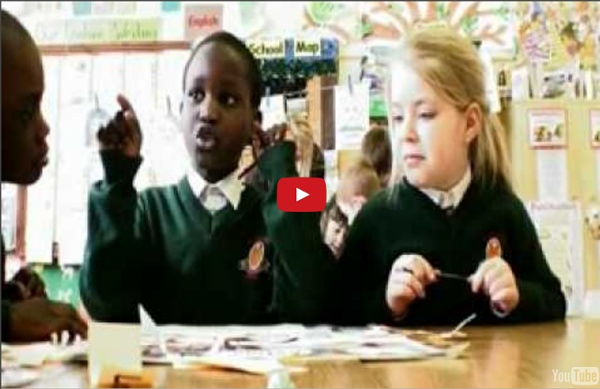



http://www.youtube.com/watch?v=yNq3cPS1e0s
Related: Intercultural education for pupils aged 9-13 • Intercultural education (lower secondary students)Educational Technology and Mobile Learning: 8 Excellent Augmented Reality Apps for iPad In this post Educational Technology and Mobile Learning is providing you with a list of some awesome augmented reality apps for your iPad but before that let us first see what the concept of augmented reality is all about . Augmented reality is a relatively new digital phenomenon that is brought about by the recent development in the field of technology and particularly mobile technology. In augmented reality the line between the virtual world and the real one is blurred. Engineers use some sophisticated technologies to pull out graphics from television screen and computer display and integrate them into real world environments. Augmented reality spices up the natural world with computer enhanced sounds, graphics, and feedback.If we are to put augmented reality in a continuum that has in one end computer generated environments and in the other end real world environments then augmented reality would be closer to the latter. Check out the augmented reality apps below
16 Flipped Classrooms In Action Right Now Flipped classrooms require educators to reconstruct traditional classrooms by sending lectures home and providing more face-to-face time at school, but elementary- through university-level instructors are finding good reasons to try them out. Frequently traced back to Colorado teachers Aaron Sams and JonathanBergmann, who were quick to experiment with posting videos online in 2008, the flipped classroom concept is small, simple and has shown positive results. The general idea is that students work at their own pace, receiving lectures at home via online video or podcasts and then devoting class time to more in-depth discussion and traditional “homework.” Where: Clear Brook High School, Harris County, Texas
The Global Partnership for Education Congratulates Malala Yousafzai and Kailash Satyarthi HomeaMedia CenteraNewsa The Global Partnership for Education Congratulates Malala Yousafzai and Kailash Satyarthi FOR IMMEDIATE RELEASE Contact: Alexandra Humme at ahumme@globalpartnership.org Washington — October 10, 2014. The Global Partnership for Education is delighted that Malala Yousafzai and Kailash Satyarthi will be receiving the 2014 Nobel Peace Prize. Two education advocates receiving this prestigious prize is a strong recognition of education as a force for peace. Seven Habits of Highly Effective Intercultural Communicators In an increasingly interconnected world, intercultural communication skills are more important than ever. Many of us are finding ourselves conducting business with people from a variety of cultures. Such contexts require the creation of new communication practices that go beyond simply the mastery of whatever language we are using. I’ve identified seven communication habits of highly effective intercultural communicators, drawn from my training and consulting work with clients operating within intercultural business environments.
Critical thinking Critical thinking is a type of clear, reasoned thinking. According to Beyer (1995) Critical thinking means making clear, reasoned judgements. While in the process of critical thinking, ideas should be reasoned and well thought out/judged.[1] The National Council for Excellence in Critical Thinking defines critical thinking as the intellectually disciplined process of actively and skillfully conceptualizing, applying, analyzing, synthesizing, and/or evaluating information gathered from, or generated by, observation, experience, reflection, reasoning, or communication, as a guide to belief and action.'[2] Etymology[edit] TeachUNICEF TeachUNICEF is a portfolio of free global education resources. Resources cover grades PK-12, are interdisciplinary (social studies, science, math, English/language arts, foreign/world languages), and align with standards. The lesson plans, stories, and multimedia cover topics ranging from the Millennium Development Goals to Water and Sanitation. Our mission is to support and create well-informed global citizens who understand interconnectedness, respect and value diversity, have the ability to challenge injustice and inequities and take action in personally meaningful ways.
Critical and Creative Thinking - Bloom's Taxonomy What are critical thinking and creative thinking? What's Bloom's taxonomy and how is it helpful in project planning? How are the domains of learning reflected in technology-rich projects? 249 Bloom's Taxonomy Verbs For Critical Thinking Bloom’s Taxonomy’s verbs–also know as power verbs or thinking verbs–are extraordinarily powerful instructional planning tools. In fact, next to the concept of backwards-design and power standards, they are likely the most useful tool a teacher-as-learning-designer has access to. Why? They can be used for curriculum mapping, assessment design, lesson planning, personalizing and differentiating learning, and almost any other “thing” a teacher–or student–has to do. For example, if a standard asks students to infer and demonstrate an author’s position using evidence from the text, there’s a lot built into that kind of task. First a student has to be able to define what an “author’s position” is and what “evidence from the text” means (Knowledge-level).